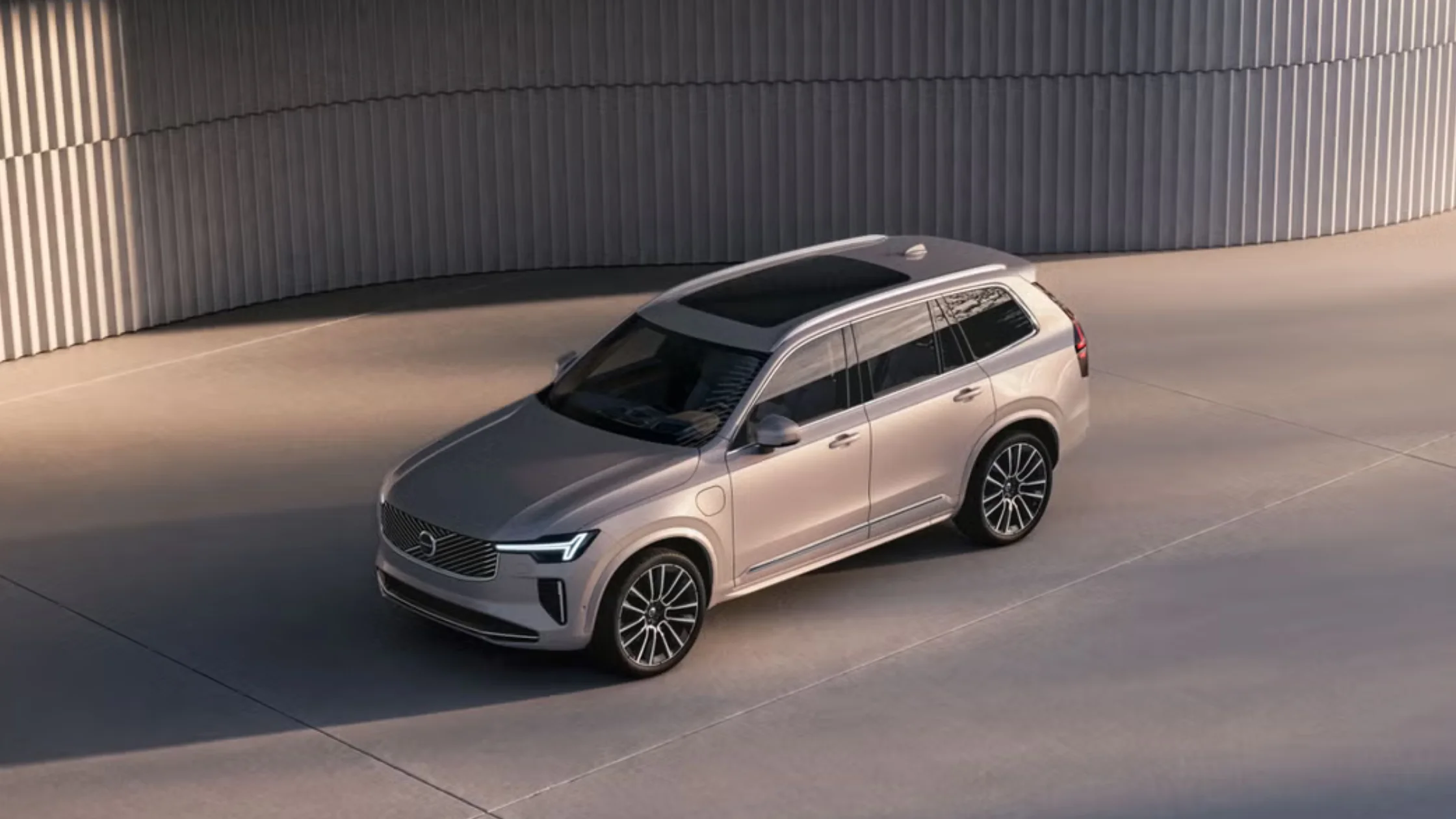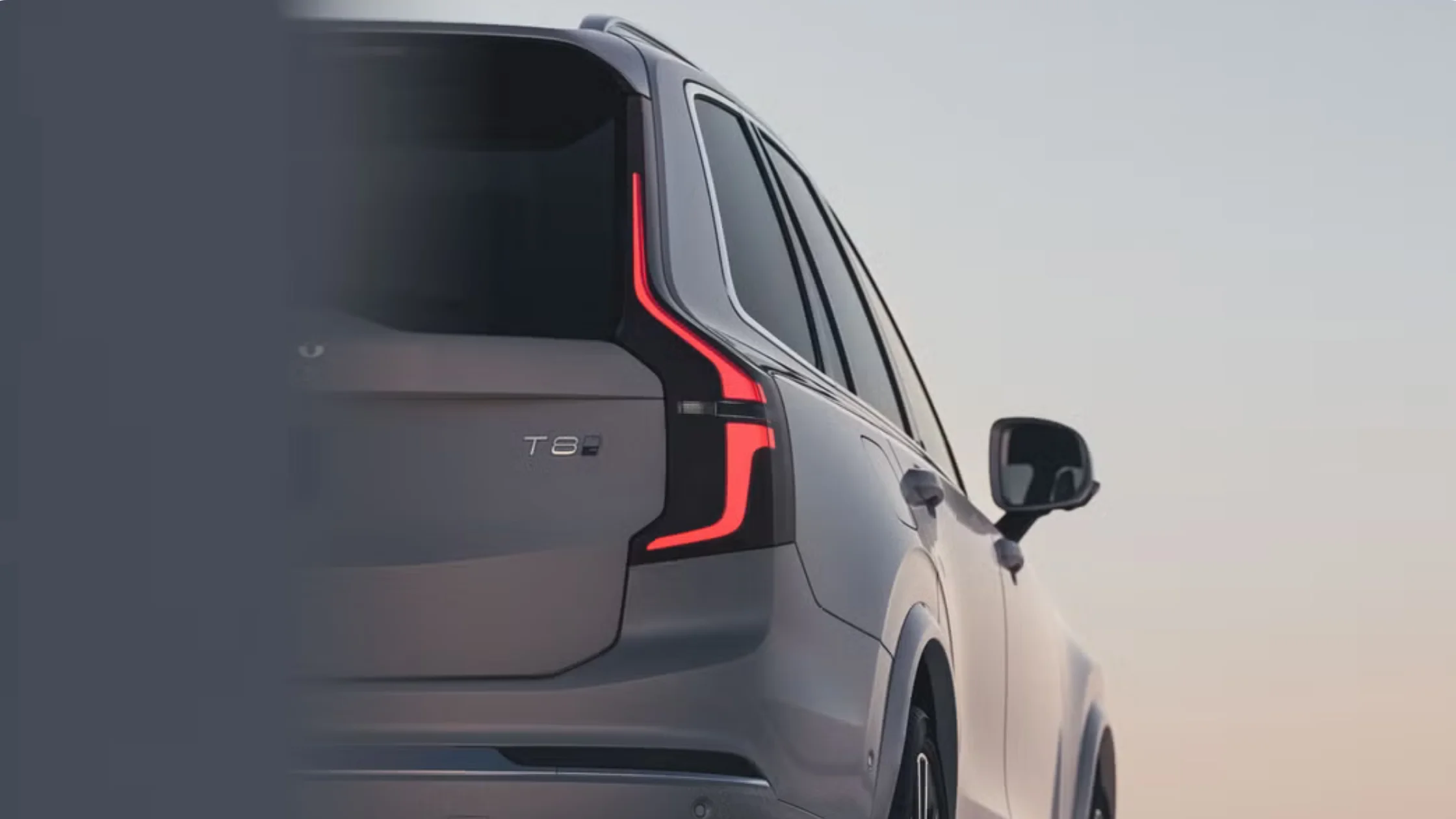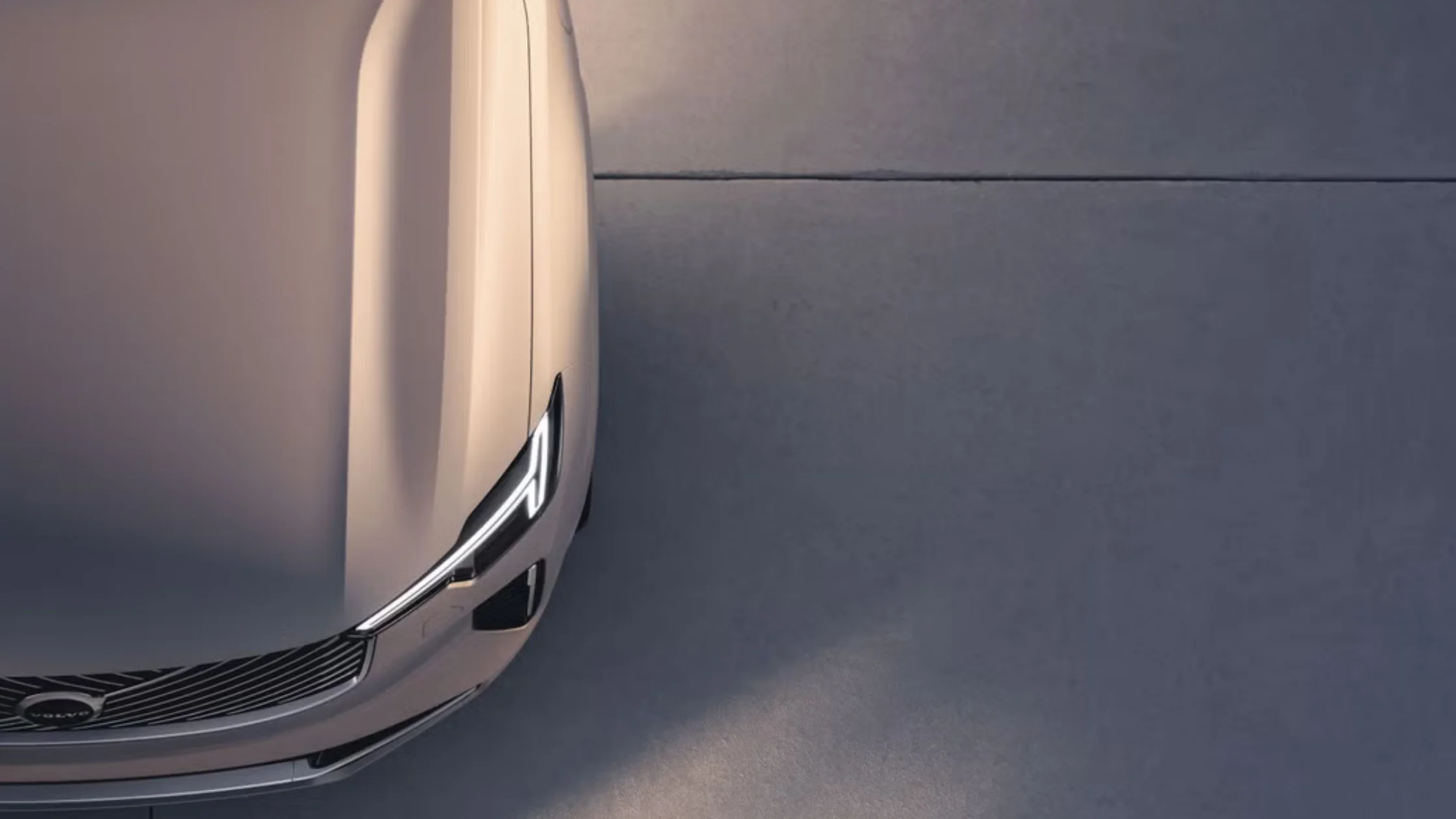
The 2025 Volvo XC90 Plug-In Hybrid (T8 AWD) stands as a large luxury SUV designed with electrified powertrains, advanced safety systems, and spacious versatility. It combines a turbocharged four-cylinder engine with electric motors to deliver strong performance while reducing fuel consumption. Available in both six- and seven-seat configurations, it offers flexibility for families and professionals who require both passenger space and utility. Every trim integrates technology focused on driving efficiency, safety, and connectivity, ensuring that the 2025 Volvo XC90 Plug-In Hybrid remains a technical leader in its category.
Powertrain Engineering and Hybrid Performance
The 2025 Volvo XC90 Plug-In Hybrid is built around a 2.0-liter inline four-cylinder turbocharged engine paired with electric motors. This system produces a combined output of 455 horsepower and 523 lb-ft of torque. The combustion engine itself generates a maximum of 312 horsepower and 295 lb-ft of torque, while the electric motor contributes up to 143 horsepower and 228 lb-ft of torque. Together, they create a smooth balance of power delivery designed for all driving conditions.
The model uses an 8-speed Geartronic automatic transmission with Start/Stop and Adaptive Shift technology. This transmission ensures efficient gear selection under varying loads and terrain, supporting both fuel economy and responsiveness. Standard all-wheel drive provides consistent traction across road surfaces and weather conditions.
The 2025 Volvo XC90 Plug-In Hybrid achieves an EPA-estimated 58 MPGe with a pure electric driving range of approximately 32 miles. This range allows for short-distance commuting without engaging the gasoline engine while providing extended capability through hybrid operation. The 18.8-gallon fuel tank and charging support through 120V and 240V cables add flexibility to energy management.
Disclaimer: Estimated range according to the EPA driving cycles. The actual range achieved under real conditions varies depending on driving behavior, driving conditions, how you maintain your vehicle, battery and other external factors. Visit fueleconomy.gov for further information.
Dimensions, Capacity, and Utility

The 2025 Volvo XC90 Plug-In Hybrid is designed for maximum functionality in both seating and cargo. Buyers may select between six-seat and seven-seat versions. The six-seat option offers two individual seats in the second row, while the seven-seat configuration provides three adjustable seats in the second row. Both layouts include a third row, ensuring versatility for passenger needs.
Cargo capacity reaches 85.7 cubic feet with rear seats folded, offering expansive space for equipment and luggage. The towing capacity is rated at 5,000 pounds, making the XC90 Plug-In Hybrid capable of handling trailers, boats, or recreational vehicles without sacrificing comfort or stability. The vehicle structure incorporates a high-strength frame and boron steel safety cage, which supports towing performance while maintaining protective integrity.
Cabin Materials and Seating Options
Interior finishes focus on sustainability and comfort without compromising durability. Upholstery options include leatherette, leather, fine Nappa leather, and a Tailored Wool Blend made with 30 percent wool. These materials are manufactured through environmentally sustainable methods while maintaining a focus on long-term wear resistance.
The available Tailored Wool Blend option emphasizes sustainable luxury, while Nappa leather with perforations supports ventilation functions in upper trims. Color combinations such as Charcoal, Blonde, Amber, Maroon Brown, and Midnight Zinc allow for customization across trims. Dashboard inlays range from gray ash to brown ash, depending on configuration.
Both six- and seven-seat configurations use stadium-style seating. The second row is raised above the first, and the third row above the second, improving visibility for passengers in all rows. Power adjustments are standard for front seats, with available features such as four-way lumbar support, memory functions, and cushion extensions in higher trims.
Technology and Infotainment Integration
Technology in the 2025 Volvo XC90 Plug-In Hybrid centers around integration with Google services and advanced driver displays. A 12.3-inch digital driver display is standard, presenting customizable vehicle and navigation data.
The Volvo Cars App extends control beyond the cabin. It allows drivers to manage remote locking, climate settings, and vehicle information. Standard connectivity features include Apple CarPlay®, Android Auto™, Bluetooth®, SiriusXM® Satellite Radio with a trial subscription, and multiple USB-C ports located at the front and rear of the cabin.
Audio systems vary by trim. A high-performance sound system is standard, while Harman Kardon® Premium Sound is available. These systems offer balanced sound distribution across the three-row cabin space.
Advanced Safety Architecture

The 2025 Volvo XC90 Plug-In Hybrid continues the brand's legacy of integrating both active and passive safety systems into every model. The structural design uses an ultra-strong boron steel safety cage, ensuring rigidity in collisions. Surrounding this foundation are airbags covering front, side, curtain, and driver knee zones, in addition to whiplash protection for front occupants.
Preventive systems include Pilot Assist, a semi-autonomous driver assistance suite that incorporates adaptive cruise control. Collision avoidance technology operates across a range of speeds, with automatic braking designed to mitigate impact with vehicles, pedestrians, cyclists, and large animals. Lane Keeping Aid helps maintain positioning, while Road Sign Information provides reminders of speed limits and traffic indicators.
BLIS, or Blind Spot Information System, is paired with steer assist and cross-traffic alert with autobrake for maneuvering in traffic or reversing from parking spaces. Additional features include a 360-degree camera, park assist at the front, rear, and sides, and LED headlights with active bending capabilities for improved night visibility. Together, these systems create layered protection for every drive.
Climate Control and Interior Comfort
Climate management in the 2025 Volvo XC90 Plug-In Hybrid is comprehensive. Standard 4-zone automatic climate control allows independent adjustments for front and rear passengers. An integrated air purifier filters cabin air to reduce pollutants and maintain a clean interior atmosphere. Heated front seats are standard, with available ventilation and massage functions in higher trims. Heated steering wheels and rear seats are available through packages.
Convenience features extend to power-folding rear headrests, integrated center booster cushions for second-row passengers in seven-seat models, and retractable rearview mirrors. The cabin also incorporates laminated panoramic sunroofs with power sunshades, providing natural lighting and ventilation.
Exterior Features and Design Options
Exterior design focuses on a balance of utility and refinement. Standard equipment includes integrated roof rails, chrome window surrounds, and color-coordinated sills and bumpers. Door handles are integrated with puddle lights, while mirrors feature auto-dimming and power retractability.
Wheels vary by trim, beginning with 20-inch diamond-cut alloy wheels as standard, with 21-inch designs available as upgrades. Each is paired with all-season tires suitable for mixed conditions. Exterior color choices include Crystal White Pearl, Denim Blue Metallic, Bright Dusk Metallic, Onyx Black Metallic, Silver Dawn Metallic, Vapour Grey Metallic, and Platinum Grey Metallic.
Driving Modes and Chassis Options
The 2025 Volvo XC90 Plug-In Hybrid provides multiple drive modes that allow drivers to tailor the vehicle's response. Electric-only mode maximizes battery range, while hybrid mode optimizes efficiency between engine and motors. A power mode can be selected for maximum combined output.
Suspension and chassis options vary by trim, with an available Active Chassis featuring air suspension for improved adaptability. This system adjusts ride height and damping characteristics based on road conditions and driver preference. Standard touring chassis setups are engineered for stable handling and passenger comfort across varied surfaces.
Schedule a Test Ride near Martinsburg, PA
The 2025 Volvo XC90 Plug-In Hybrid presents a combination of 455 horsepower, 523 lb-ft of torque, advanced safety systems, and integrated Google technology. Its 32-mile electric range supports efficient daily driving, while its 5,000-pound towing capacity and 85.7 cubic feet of cargo space ensure capability for larger tasks. We invite drivers to experience this technical achievement in person. Schedule a test drive today at Volvo Cars of Hagerstown near Martinsburg, PA, and discover the performance of the hybrid powertrain, the functionality of advanced safety systems, and the clarity of integrated technology. The 2025 Volvo XC90 Plug-In Hybrid delivers the specifications, engineering, and versatility required for modern driving.Contact Us Today
* Indicates a required field